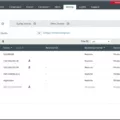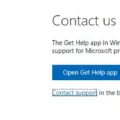Web attacks are a type of cyber attack that can cause a range of damages, from minor inconveniences to major losses. They are also one of the most common threats on the internet. In this blog post, we’ll take a look at some of the more commonly seen web attacks and how they can be prevented.
Malware is one of the most common types of web attacks. It is malicious code that is designed to damage or gain unauthorized access to a computer system. Malware can be spread through email attachments, instant messages, and downloads from malicious websites. It can also be used to steal data and infect websites with malicious content. To protect against malware, it is important to keep your computer up-to-date with the latest security patches, as well as use antivirus software and firewalls.
Phishing attacks are another type of web attack that is becoming increasingly popular. This type of attack involves sending emails or messages that appear to be from legitimate companies asking for personal information such as passwords or credit card numbers. To prevent phishing attacks it is important to never click on links in emails or messages unless you know for sure that they are genuine links from the company in question. Additionally, make sure you use strong passwords and two-factor authentication whenever possible.
SQL injection attacks are another type of web attack that takes advantage of vulnerabilities in websites’ databases by inserting malicious code into them in order to gain access to sensitive information such as usernames and passwords. To prevent these types of attacks it is important to use prepared statements when interacting with databases and make sure your website has appropriate input validation measures in place such as checking user input against known patterns or blacklisting certain inputs altogether.
Cross-Site Scripting (XSS) is yet another type of web attack that involves injecting malicious scripts into a website’s code in order to gain access to sensitive information such as cookies or user-session information. To prevent XSS attacks it is important to ensure your website has proper input validation measures in place such as filtering out known dangerous characters or blocking requests from suspicious sources altogether. Additionally, any user-supplied data should always be escaped before being outputted back onto your website’s pages so that it cannot be used maliciously by an attacker.
Denial-of-Service (DoS) Attacks are also becoming increasingly popular due to their ability to bring down entire websites by overwhelming them with too much traffic or data requests at once. To protect against DoS attacks it is important to have good server infrastructure in place which can scale quickly if needed and ensure all potential points of entry into your systems have adequate security measures in place such as firewalls and intrusion detection systems (IDS). Additionally, consider implementing rate-limiting techniques which will limit how many requests per second any particular IP address can make on your website so attackers cannot flood your server with too much traffic all at once.
Finally, Session Hijacking and Man-in-the-Middle Attacks involve intercepting communication between two parties without either party being aware this has happened so an attacker can gain access to sensitive information such as usernames and passwords or even hijack a user’s session entirely without their knowledge. To protect against these types of attacks it is important to always use secure protocols when communicating online such as HTTPS for websites which encrypt all communication between two parties so attackers cannot easily intercept it without breaking encryption algorithms first; additionally, consider implementing additional authentication measures like two-factor authentication which will add an extra layer of security when logging into accounts on different websites so attackers cannot hijack sessions even if they do manage somehow intercept communications between two parties unnoticed initially still won’t have enough credentials necessary gain access accounts protected this way.
there are many different types of web attacks out there today ranging from minor inconveniences like malware infections right to major disasters like denial-of-service (DoS) attacks but fortunately, there are steps we can take both at home and within our business’s network infrastructure to help minimize the impact these cyber threats have minimizing risk our online activities significantly.

Common Types of Web Attacks
The most common web attacks are SQL injection, cross-site scripting (XSS), remote file inclusion (RFI), local file inclusion (LFI), and malicious file execution.
SQL Injection is an attack in which malicious code is inserted into a database query to exploit a vulnerable web application. Cross-site scripting (XSS) is an attack in which malicious code is injected into a website and executed by other users who visit the website. Remote File Inclusion (RFI) attacks are when attackers gain access to another server by exploiting vulnerable files on the target server. Local File Inclusion (LFI) attacks are similar, but they involve exploiting vulnerable files on the same server as the target. Finally, malicious file execution attacks are when attackers gain access to a system and execute malicious code to gain control of it, such as backdoor shells or rootkits.
Types of Attacks
1. Malware-Based Attacks: These attacks involve malicious software that is designed to damage or disrupt a computer’s operations. Examples include ransomware, Trojans, and worms.
2. Phishing Attacks: These are online scams where attackers attempt to gain sensitive information such as usernames, passwords, credit card details, etc., by pretending to be a legitimate entity. Common phishing attack types include spear phishing, whaling, and smishing.
3. Man-in-the-Middle Attacks: In these attacks, an attacker intercepts communication between two parties in order to gain access to confidential data or modify the transmitted message without either party knowing.
Types of Web Security Attacks
Web security attacks are malicious attempts to access, alter, or damage a website or its data. Common types of web security attacks include malware attacks, phishing attacks, password attacks, man-in-the-middle attacks, SQL injection attacks, denial-of-service (DoS) attacks, insider threats, and crypto-jacking.
Malware attacks involve the installation of malicious software onto a website or web server to gain access to sensitive information or disrupt web operations. Phishing attacks involve sending fraudulent emails that appear to come from a legitimate source in order to obtain personal data such as passwords or credit card numbers. Password attacks involve using automated software to guess passwords and gain access to websites or web servers.
Man-in-the-Middle (MITM) attack is an attack where the hacker intercepts communications between two parties by stealthily relaying messages between them without either party knowing about the presence of the other. SQL injection attack involves inserting malicious code into web forms in order to execute unauthorized commands on a database server. Denial-of-Service (DoS) attack involves flooding a website with so many requests that it becomes unavailable for users. Insider threats refer to insiders with privileged access exploiting their privileged access for personal gain or causing disruption. Cryptojacking is when hackers hijack a computer’s resources in order to mine cryptocurrencies like Bitcoin without the user’s knowledge or permission.
Common Web Security Threats
1. Phishing: Phishing is a type of cyberattack that uses misleading emails and websites to gain access to sensitive information such as passwords and credit card numbers. By disguising an email or website as a legitimate source, attackers can trick people into revealing their personal information.
2. Ransomware: Ransomware is malicious software that encrypts data and holds it, hostage, until a ransom is paid. Once installed on a system, ransomware can block access to files, lock the user out of their computer, or even delete important files altogether.
3. SQL Injection: This type of attack occurs when an attacker inserts malicious code into a web application’s Structured Query Language (SQL) database in order to extract confidential data or modify existing data. Attackers use SQL injection to bypass authentication and authorization mechanisms, steal session information, or gain access to sensitive data.
4. Cross-Site Scripting (XSS): XSS attacks are one of the more common web security threats and involve injecting malicious code into vulnerable web applications in order to gain access to user credentials or other confidential information. The code is usually embedded in URLs or HTML documents and can be used to launch other attacks such as phishing campaigns or malware infections.
5. Code Injection: Code injection involves inserting malicious code into an application’s source code in order to gain privileged access to the system or manipulate data for malicious purposes. Attackers may insert code that allows them to bypass authentication and authorization mechanisms, inject malware onto the system, steal confidential data, or modify existing data without permission.
6. CEO Fraud/Impersonation: Also known as “business email compromise,” this type of attack involves an attacker impersonating a company executive in order to deceive employees into transferring funds or disclosing confidential information such as passwords and credit card numbers. Attackers typically use social engineering tactics such as email spoofing or phishing campaigns in order to carry out this type of attack.
7 Viruses/Worms: Viruses are malicious pieces of software designed to spread from one computer system to another by attaching themselves to programs and files on the host computer system before replicating themselves onto other computers connected via networks such as the internet. Worms are similar but spread without requiring user interaction by exploiting vulnerabilities in systems and networks instead of attaching themselves to programs and files like viruses do.
8 Spyware: Spyware is malicious software that gathers confidential information from unsuspecting users without their knowledge or consent. It typically runs silently in the background while gathering data such as browsing history, keystrokes, passwords, payment information, etc., which is then sent back to its creator for misuse purposes.
9 Malvertising: Malvertising refers to the use of online advertising networks as vectors for delivering malicious content such as malware, phishing scams, ransomware, etc., directly onto users’ systems without their knowledge. This can be done through display ads on websites, search engine poisoning techniques, etc.
10 Man-in-the-Middle (MITM) Attacks: MITM attacks occur when an attacker intercepts communications between two parties by positioning themselves between them. They then have access not only to any private messages exchanged between them but also to any other traffic passing through that connection. This enables attackers not only to eavesdrop but also active manipulation of messages including the insertion of malicious content for further exploitation.
Common Browser Security Threats
1. Malware: Malware is malicious software that can infect your computer, laptop, or mobile device and cause serious damage. It can be used to steal your personal information, delete important files, or even encrypt your data and hold it for ransom.
2. Phishing: Phishing is a type of social engineering attack that uses emails or malicious websites to trick users into revealing sensitive information like passwords, credit card numbers, and bank account details.
3. Browser hijacking: Browser hijacking occurs when malicious software modifies your browser settings without your permission in order to redirect you to websites that are filled with advertisements or malware.
4. Man-in-the-browser attacks: Man-in-the-browser (MITB) attacks involve the installation of malicious code on a user’s machine that is able to intercept and alter web traffic as it passes through the browser window.
5. Drive-by downloads: Drive-by download attacks occur when a user visits a website containing malicious code which silently downloads malware onto their computer without their knowledge or consent.
Types of Web Application Attacks
Web application attacks are unauthorized attempts to gain access to a web application’s server and its data. These attacks use malicious code and techniques to bypass security measures, allowing criminals to gain direct access to databases containing sensitive information such as personal records and financial details. Web application attacks can be launched through multiple methods, including exploiting known vulnerabilities in the system, brute force guessing passwords or credentials, and SQL injection. By accessing the database, criminals can harvest sensitive information or manipulate it for other malicious purposes.
Types of Computer Attacks
The 8 types of computer attacks are:
1. Ransomware: This type of attack uses encryption to force the target to pay a ransom demand, usually in the form of cryptocurrency.
2. Malware: Malicious software, such as viruses and worms, can be used to damage or gain access to a system or network.
3. Fileless Attacks: Attacks that take advantage of system vulnerabilities without leaving any traceable files on the victim’s machine.
4. Phishing: A type of social engineering attack where an attacker attempts to trick users into revealing sensitive information via email or other communications channels.
5. Man-in-the-Middle (MitM) Attack: An attack where an attacker is able to intercept traffic between two parties by inserting themselves in between them, allowing them to view and modify data as it passes through their connection.
6. Malicious Apps: Apps that contain malicious code or malware designed for malicious purposes such as stealing data, committing fraud, or spreading malware further in a network environment.
7. Denial of Service Attack (DoS): An attack that attempts to flood a server with requests in order to overwhelm it and prevent legitimate requests from being processed.
8. Zero-Day Exploit: An exploit that takes advantage of an unpatched vulnerability on a system before the vendor has had time to issue a patch for it, allowing attackers access to systems and data they should not have access to..
Types of Attacks on Network Security
1. Denial of Service (DoS) Attack: A DoS attack is an attack where a malicious actor attempts to overload or crash a system or network by overwhelming it with requests, traffic, or other resources. This type of attack can be used to deny service to legitimate users, disrupt business operations, and cause financial losses.
2. Man-in-the-Middle Attack: A Man-in-the-Middle (MitM) attack is when an attacker intercepts communication between two parties and impersonates both parties in order to gain access to sensitive information. This type of attack is especially dangerous as it can be used to access passwords, credit card numbers, and other confidential data.
3. Distributed Denial of Service (DDoS) Attack: DDoS attacks are similar to DoS attacks but involve multiple attackers or systems working together to overwhelm a system or network with requests or traffic. These types of attacks are very difficult to defend against due to their sheer size and complexity.
4. Password Attacks: Password attacks are attempts by malicious actors to gain access to accounts by guessing passwords or using brute force techniques such as dictionary attacks or rainbow table lookups. These types of attacks are especially dangerous as they can lead to account compromise if successful.
5. Exploit Kits: Exploit kits are collections of pre-packaged malicious code that attackers can use to exploit known vulnerabilities in software applications and operating systems in order to gain access and control over targeted systems and networks.
6. Social Engineering Attacks: Social engineering attacks involve manipulating victims into divulging confidential information through deception and manipulation tactics such as phishing emails, telephone scams, fake websites, etc. These types of attacks are becoming increasingly common due to the ease with which attackers can target large groups of people at once without raising suspicion.
Conclusion
To conclude, web attacks are a serious threat to the security of any website or online platform. There are many different types of cyberattacks, including malware attacks, phishing attacks, password attacks, man-in-the-middle attacks, SQL injection attacks, denial-of-service attacks, insider threats, and crypto jacking. It is important for organizations and individuals to understand the risks associated with these types of cyberattacks and take steps to protect themselves from them. The best way to protect against web attacks is to use strong passwords and maintain regular updates on all software. Additionally, implementing multi-factor authentication can help reduce the risk of an attack by making it more difficult for attackers to gain access.








